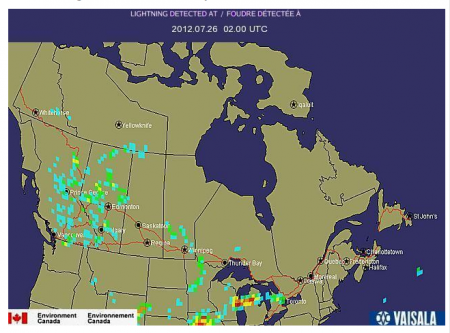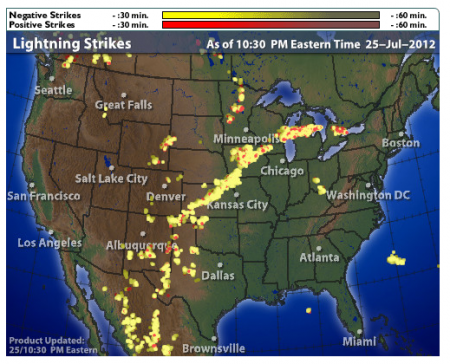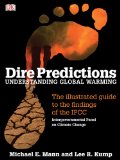From what we can tell, the people alive today are putting their own welfare ahead of the integrity of the planet, worsening the prospects of those who will follow. Can anything be done about that?
The problem
The decisions of governments have always affected future generations. When a new bridge is built, it will likely remain in use for a number of decades. Today’s health research (or lack thereof) affects the fates of disease sufferers in the future. The debts accumulated by governments today affect what sort of financial environment the people of the future will live in. The legitimacy of democratic governments is grounded on the claim that they represent the interests of the people who they govern. More precisely, they are meant to implement the current wishes of those people, as identified and put in action through institutions like elections. Ideally, such a system prevents the emergence of parasitic or predatory governments that serve their own interests at the expense of those of the population at large.
Climate change complicates the situation, most importantly by creating a deep conflict between the current generation and all future generations. The choices we are making today – about how much energy we use and where we get that energy from – profoundly affect what kind of world members of future generations will live in and, by extension, what their life prospects will be. The choices we can make that seem most likely to improve their life prospects are generally deeply unpopular, given that they usually involve sacrifices. For instance, we can reduce our impact on the climate by traveling less, enduring colder homes in winter and warmer homes in summer, tolerating the presence of dangerous nuclear power stations, eating less meat, and reducing our consumption of luxury products. By contrast, many of the things which we enjoy doing cause harm to future generations.
Today’s governments necessarily respond to the preferences of the current generation. There is some extent to which those preferences include concern for the future. We generally resist proposals to clearcut national parks, for example. But the revealed pattern of our overall behaviour strongly suggests that we care a lot more about our own immediate physical comfort and convenience than we care about the prospects of the people that follow us. We might delude ourselves into thinking that buying recycled toilet paper and avoiding plastic bags represent sufficient action to protect the planet for future generations, but it seems naïve to think that anybody aside from the most ill-informed members of society seriously believe that.
Today’s governments therefore represent a generation that has chosen to be parasitic and predatory when it comes to the interests of the generations that are to come. We are choosing to impoverish their world, in order to continue to enjoy our present comforts and recreations. Even though we have been amply informed that we are emptying the seas of fish, stripping the planet of biodiversity, and flooding the atmosphere with climate-changing gas, we prefer to carry on as we have in the past. The only threats that seem to motivate large-scale action are immediate threats to the financial system (witness the eagerness with which banks are rescued) and threats to our physical security (the over-reaction to September 11th, huge ongoing investment in weapons, paranoia and mass incarceration in response to crime, etc).
Possible solutions
How are we to escape from this situation? One set of possibilities centres around ways in which the current generation could be brought to sacrifice some of its own welfare for the sake of future generations. One possibility is that the current generation will progressively become willing to accept sacrifices for the sake of the people who will follow – foregoing cheap flights and giant air conditioners for poorly insulated homes. Another possibility is that people will become sufficiently concerned about climate change affecting themselves personally that they will become willing to accept present sacrifices in exchange for a reduction in future risks. Governments could also deviate from the course of implementing the current wishes of voters by enacting policies that reduce the welfare of those alive now for the sake of those yet to come.
There are some alternative possibilities highlighted by those who see such sacrifices as either undesirable or unattainable. It is possible that technological advancement and the operation of markets will somehow make our current preferences compatible with a good world in the future, thus eliminating the conflict between generations. It is also possible that we will undergo a profound shift in what we value, moving away from a preference for resource- and energy-intensive goods and services toward a preference for things that have less of an impact on the planet.
Obviously, there are reasons to be skeptical about all of these possibilities. There are probably other possibilities not listed here. Still, it seems we are in a situation where a clear problem exists and where no clear route forward toward solving it is obvious. Indeed, several of the possible approaches to solution are in conflict with one another. Should we be covering huge areas of desert with solar panels and building hundreds of new nuclear plants to feed the energy ‘needs’ of future generations without altering the atmosphere, or should we be trying to provoke people into re-assessing their needs and living less energy-intensive lifestyles? Perhaps we should be encouraging a rapid reduction in the global population, so that the aggregate impact from a smaller number of richer people will remain within the boundaries of what the planet can tolerate. Perhaps we should be giving up on the project of reducing greenhouse gas pollution, which has been failing now for decades, and accept that our best chance of preventing catastrophic climate change is developing technologies to intentionally cool the planet. Of course, there is no guarantee these technologies will work, and it is virtually certain that they will have serious side-effects.
There are so many overlapping uncertainties that it is challenging to adjudicate between these and other options. We don’t know what the future of fossil fuel production will look like, particularly given that we don’t know what sort of investment decisions will be made. We don’t know how the technology and economics of other forms of energy will evolve during the next couple of decades, in fields as diverse as batteries, nuclear power, and solar panels. We don’t know how quickly and severely the impacts of climate change will be felt, or where in the world they will first occur. We don’t know the political future of important countries like China, or important supra-national entities like the European Union.
One possible response to uncertainty is to identify the things about which we can be most confident and focus our action on them. We now know that burning fossil fuels causes the climate to change dangerously. In response, we could devote our energies to doing whatever we can to avoid the production and use of fossil fuels. We also know that there are many opportunities around the world for improving energy efficiency while simultaneously saving money. That suggests that strategies focused on deploying more efficient technologies and approaches could be promising. We also know that people do care to some extent about the kind of world they are creating for their children and grandchildren, suggesting that further efforts to share what we are learning about the consequences of our current actions and the alternatives that exist for us may prove fruitful.
All of these responses have problems. Restricting fossil fuel use mainly involves choices that are deeply unpopular. People in rich places are accustomed to incredibly energy-intensive lifestyles which only fossil fuels can plausibly sustain in the near-term. Efficiency improvements can be hard to achieve, and tend to be negated when people invest the savings in doing more energy-intensive things, rather than achieving an overall efficiency improvement. Finally, while people do care about the prospects of their children, it is hard to convince them that a stable climate is a key part of that. Even if they can be convinced of that, people are loathe to take action when others around the world are not doing so. Also, our energy choices affect hundreds of future generations. People may care intensely about the prospects of their children and grandchildren, but they tend to behave as though they are indifferent to the prospects of people living in 500 or 1000 years, who by most accounts have an equal claim to our moral consideration.
All told, this is a murky time for the environmental movement. Progress has been blocked on most fronts. International negotiations on climate change have failed to produce meaningful action. The United States, which is arguably the most important country in the world when it comes to developing a global consensus to proceed, is immobilized by domestic politics. Nuclear power stations – one of our larger-scale low-carbon options – are explosively unpopular. Meanwhile, continued growth in rapidly-developing countries and the development of unconventional oil and gas resources keep the world on a trajectory of ever-increasing greenhouse gas pollution. It’s hard not to despair about the future.
Related:









